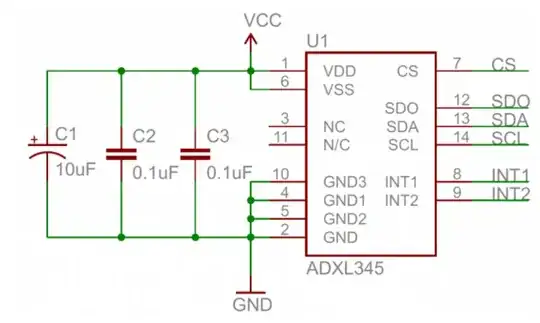How can I calculate decoupling capacitor value? Which amount of noise we can filter use it. Why use here 10 µF, 0.1 µF capacitor?

How can I calculate decoupling capacitor value? Which amount of noise we can filter use it. Why use here 10 µF, 0.1 µF capacitor?

It's not for amount of noise. It's to supply current (the big one) and to react quickly (the small ones). So to size the big- consider current. Analog circuits, like sensors and stuff, would want 1uF and more. Digital- depends, but normally you put 0.1uF on each VCC input. For really fast stuff it would also be 1nF for low ESL.
In most cases you will not feel a difference. When you will, it will take long hours to understand why the hell your circuit behaves weird way.
Suppose you have 1 amp surges, every 1 microsecond. What size Cbypass to use?
What if the 1 amp surge exists for 1 nanosecond. What amount is charge is consumed during that 1 nanosecond? \$Q = C V = I T\$
\$Q = I T\$
Q = 1 amp * 1 ns = 1 nanocoulomb
So what? Can your circuit tolerate 1 millivolt of VDD sag?
\$C V = Q\$
\$C = Q / V\$ = 1 nanocoulomb / 1 millivolts = 1 microfarad.
Rinse the math, bring in your own assumptions, and repeat the math.
VddandVsswould be positive supply and ground respectively. – Colin May 16 '18 at 21:17!, such as!CS. If you say want to negate only a part of it, you can quit negation with another!such as!IO!/MEM. – Richard the Spacecat May 16 '18 at 21:48@somerandomnumberat the end, such asNC@0andNC@1. The part of the name after the@would be invisible in the schematic. – Richard the Spacecat May 16 '18 at 21:49